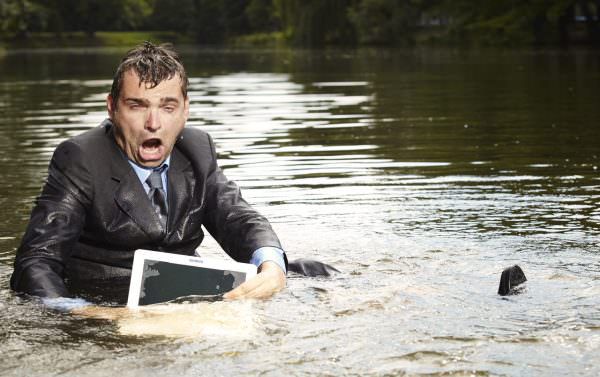
Common sense dictates that water and electronics don't mix, but the same doesn't always hold true for a wet flash drive. There are a few tips and tricks to salvage your digital data in the event that your USB flash drive went for a swim in the pool, washer, sink, gutter or pouring rain. These suggestions are worth a shot if you want to save some money before buying an entirely new flash drive.
Above all else, remove the drive from its water source. Gently pat off excess water. Next you have a few options to consider. The method you choose depends on the resources you have available as well as what you feel most comfortable with.
The simplest solution for a flash drive that got wet is to air dry it in a low humidity area for a few days. Be careful about putting it outside to dry because you may further expose it to more heat or aggravating elements. Waiting a few days before you try to use the thumb drive helps ensure that all of the nooks and crannies inside of the drive are no longer wet.
Alternative drying options will attempt to speed up the drying process. Alcohol is the kind of solution that draws water away, so if you take a denatured alcohol that's greater than 75 percent and use it with gentle application, you'll have a greater chance at removing the water.
Other household items like rice or silica packets (cloth like packets leftover from your new shoe, bag and clothing purchases) will effectively absorb from soggy flash drives. Simply fill a sealable plastic baggie with rice or a handful of silica packets and insert the USB drive. Leave the device in this manner for at least a few hours.
There are some moisture removal products on the market like Bheestie or clay desiccant packets that draw water away through its hygroscopic properties, but they are often a little more pricey and never around when you need one (unless you soak flash drives on a regular basis!).
One thing to note—if you drop your flash drive in saltwater, you may want to actually rinse it with fresh water before drying. To leave the salt scum behind, you risk doing greater harm to the integrity of the USB stick because of salt's corrosive nature.
Don't plug into a USB port until you've waited for all of the moisture to be drawn out or evaporated. If you plug it into an electrical component with damp parts, you'll not only damage the USB drive, but quite possibly your computer or port.
Keep in mind that there is always a small chance that the data will be completely lost despite drying it completely. This could be due to the quality of the drive or irreparable damage to the circuitry based on the environmental conditions it endured. More often than not however, there is a glimmer of hope if you follow the proper steps.
Had experience with a drenched flash drive? What did you do to dry it? Did it work? Share your story with us!
